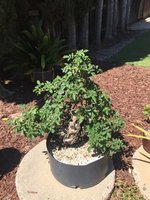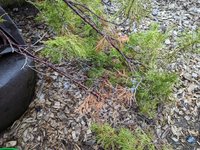Cajunrider
Imperial Masterpiece
So far here are my results with mitigating factors listed. All trees collected late spring through summer high heat in the south.This thread should require reports of the event of mortality in collected trees. Curious of the long-run fate of these “out of season” collections and how they may be misleading to members of the forum regarding best practices.
Privet here collected today from location where it rightfully should and would be eradicated from, feel 94% certain of its survival given the species and experience with :
View attachment 449868
Mayhaws 100% survival of a few dozens.
Bald cypress 9 out 10 survived. The one that died I am still wondering why.
Hackberry 0/1 tree collected from track hoe dig
Liquidambars 3/6 survived. All hard chop trees died. My poor care was not sufficient to keep stumps alive.
Oak 2/2 survived. Both are damaged tree rescued and not healthy trees in the ground.
Yaupon holly 1/1 survived






